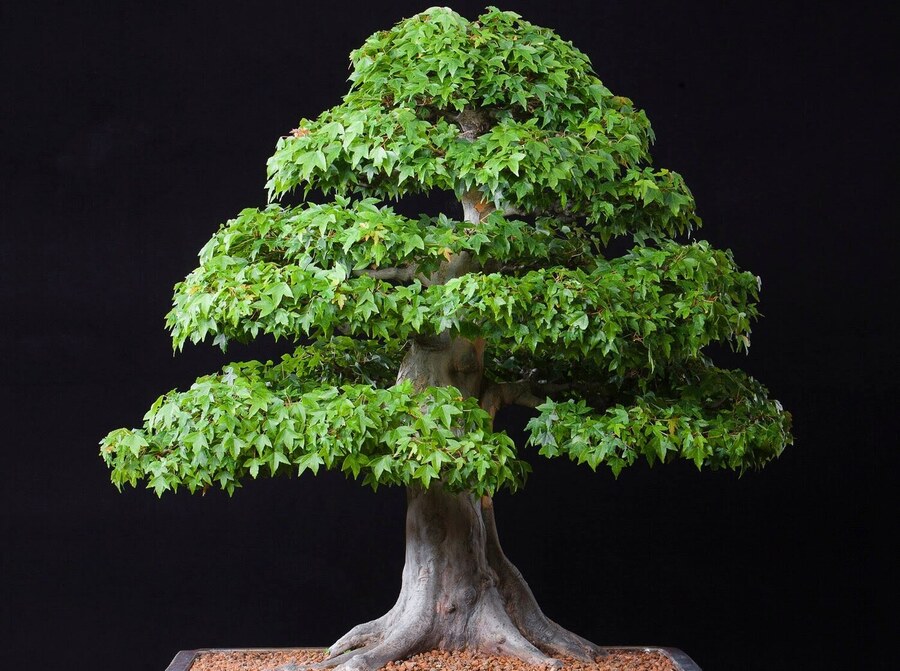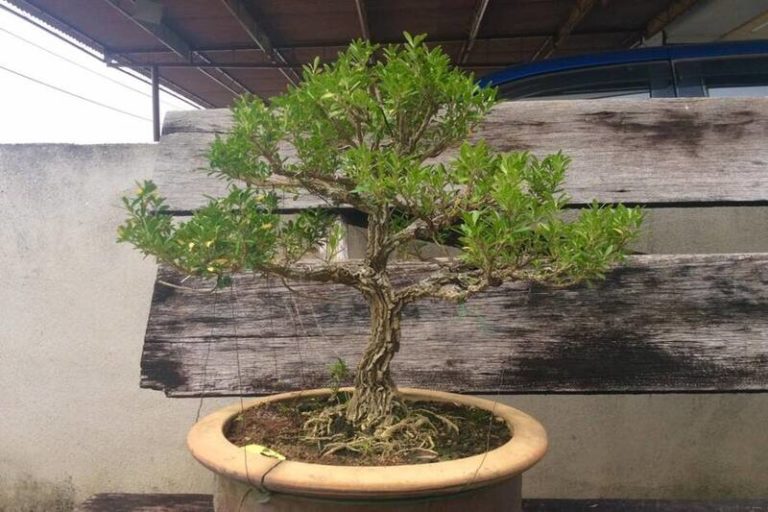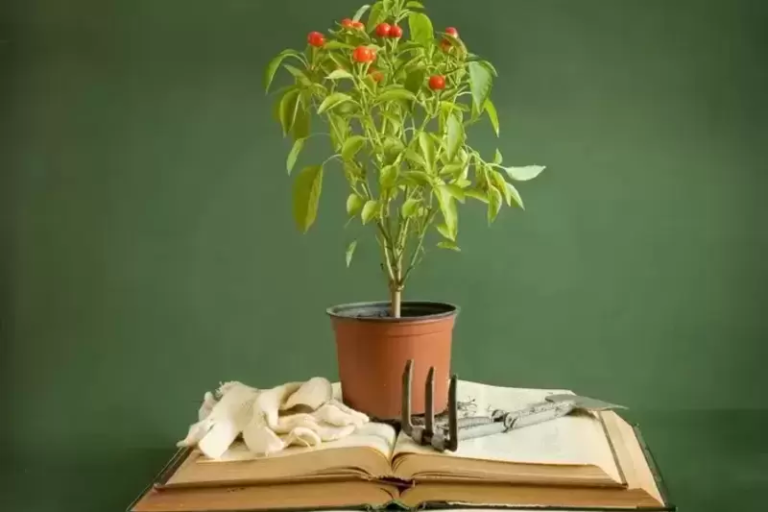Trident Maple Bonsai: The Perfect Gift for the Green Thumb in Your Life
Trident Maple Bonsai is a small replica of the trident maple tree planted and nurtured in a pot to create a stunning and one-of-a-kind work of art. Because of its unusual three-lobed leaves, the trident maple is endemic to China, Japan, and Korea. It is also known as the three-toothed maple. Trident maple has a modest, compact size in bonsai form, making it an excellent choice for inside or outdoor bonsai growth.
This article will provide you some advice and information on how to care for and maintain your trident maple bonsai.
Types of Trident Maple Bonsai
There are various forms of trident maple bonsai to pick from, according on your choice, skill level, and intended aesthetic. The following are some of the most popular trident maple bonsai varieties:
- Formal Upright: This is the most common style of trident maple bonsai, characterized by a straight trunk that gradually tapers towards the top, with branches growing evenly on each side.
- Informal Upright: This style is similar to the formal upright, but the trunk has more curves and twists that give it a more natural, organic look.
- Slanting: In this style, the tree’s trunk bends at an angle, making it look lively and not symmetrical.
- Semi-Cascade: This style features a trunk that cascades downwards, but doesn’t touch the ground. The branches grow upwards, giving it a balanced and harmonious appearance.
- Cascade: This look is quite similar to the semi-cascade, except the tree’s trunk goes all the way to the floor instead of stopping halfway.
- Broom Style: The limbs of the tree grow upwards and outwards in this pattern, generating a canopy that resembles a broom.
- Literati: This style features a thin, twisted trunk with sparse branches, giving it a unique and elegant appearance.
Consider the shape of the tree’s trunk and branches, as well as the overall aesthetic that you want to attain, when selecting a style for your trident maple bonsai. Bear in mind that each style needs a unique set of trimming and shaping procedures to keep its appearance. Your trident maple bonsai may become a stunning and unique piece of art that you can enjoy for years to come with appropriate care and maintenance.

Characteristics of Trident Maple Bonsai
The trident maple (Acer buergerianum) is a deciduous tree native to China, Japan, and Korea. Here are some of the characteristics of trident maple bonsai:
- Leaves: The trident maple bonsai has tiny, delicate leaves with three lobes that resemble a trident. The leaves turn crimson, orange, or yellow in the autumn, enhancing the tree’s attractiveness.
- Bark: The bark of the trident maple bonsai is grayish-brown, with shallow furrows and ridges that create a unique and textured appearance.
- Size: The trident maple bonsai is a tiny, compact tree that may reach heights of 3 to 4 feet. It is perfect for indoor or outdoor bonsai cultivation.
- Trunk: The trunk of the trident maple bonsai is often thick and sturdy, with a smooth texture that creates a beautiful contrast with the textured bark.
- Branches: The branches of the trident maple bonsai are often twisted and gnarled, creating a unique and dynamic appearance. The branches grow in a natural and organic pattern, creating a harmonious and balanced look.
- Flowers and Fruits: The trident maple bonsai has tiny, yellowish-green blooms in the spring, followed by little, winged fruits in the autumn.
- Aesthetic Appeal: Trident maple bonsai is a well-liked option among bonsai lovers due to its distinctive and attractive appearance. It is a lovely and distinctive work of art that can bring a touch of nature into any setting thanks to its little size and delicate characteristics.
Unique and attractive, the trident maple bonsai has become a favorite option among bonsai aficionados. It is perfect for indoor or outdoor bonsai cultivation because to its small size, delicate characteristics, and distinct aesthetic appeal.
How to Grow Trident Maple Bonsai
Growing a trident maple bonsai requires patience, attention, and proper care. Here are some steps to help you grow a healthy and beautiful trident maple bonsai:
Choose the right soil: Trident maple bonsai prefers well-draining, nutrient-rich soil. You can use a mixture of Akadama, pumice, and lava rock for the best results.
Watering: Water your trident maple bonsai regularly, but make sure the soil doesn’t become waterlogged. Water the tree when the soil is slightly dry to the touch.
Fertilizing: Fertilize your trident maple bonsai every two weeks during the growing season with a balanced fertilizer. Reduce the frequency during the winter months.
Pruning: Maintaining the shape and health of your trident maple bonsai requires regular trimming. If needed, prune the tree’s branches and leaves to preserve the ideal form and size.
Wiring: Wiring is a technique used to shape the branches of the trident maple bonsai. Wrap a thin wire around the branch and gently bend it into the desired shape. Remove the wire after a few months to prevent it from digging into the bark.
Repotting: Repot your trident maple bonsai every two to three years to ensure that the roots have enough room to grow. Repot in the spring before the tree begins to grow new leaves.
Sunlight: Place the bonsai trident maple in a spot that receives indirect sunlight for the majority of the day, since it thrives in partial shadow.
Trident maple bonsai need frequent maintenance. These easy actions will help your tree grow and become a unique piece of art you can enjoy for years. Be patient and enjoy seeing your trident maple bonsai grow.
Benefits of Growing Trident Maple Bonsai
Growing a trident maple bonsai has numerous benefits, some of which are:
Aesthetic appeal: The trident maple bonsai may give a touch of nature and elegance to any setting. Ideal for people who value natural beauty and wish to incorporate it into their home or business decor.
Relaxation: Growing plants is believed to be calming and healing for the body and mind. A tranquil and quiet activity that may help you rest and relax after a long day is growing a bonsai of a trident maple.
Creative expression: Growing a trident maple bonsai allows you to express your creativity and artistic vision. You can shape the tree into a unique and personalized design that reflects your personal style and preferences.
Education: The fundamentals of bonsai growth, horticulture, and the tree life cycle may all be learned via the process of creating a trident maple bonsai. You may also learn more about the various methods and equipment used in bonsai growth.
Environmental benefits: Growing a trident maple bonsai can contribute to environmental conservation efforts by reducing carbon dioxide levels, purifying the air, and providing a habitat for insects and birds.
One’s physical, mental, and emotional health can all benefit from cultivating a trident maple bonsai. It’s a wonderful opportunity to spend time outside, explore your artistic side, and get insight into bonsai and gardening practices. Growing a trident maple bonsai may be a satisfying and gratifying hobby for gardeners of all skill levels.
How to Care and Maintain Trident Maple Bonsai
The health and lifespan of your trident maple bonsai depend on proper maintenance. Here are some pointers for maintaining your tree:
- Watering: Make sure the soil is not flooded while watering your trident maple bonsai. When you touch the earth and it feels just a little bit dry, water the tree. The size of the pot and the weather will determine how frequently to water.
- Soil: Use a nutrient-rich soil mix that drains well and allows for good drainage and air flow.
- Fertilizing: Fertilize your trident maple bonsai with a balanced, water-soluble fertilizer every two weeks during the growing season. Reduce the frequency during the winter months.
- Pruning: Regular pruning is necessary to maintain the shape and health of your trident maple bonsai. Prune the branches and leaves as necessary to maintain the desired size and shape of the tree.
- Wiring: Wiring is a technique used to shape the branches of the trident maple bonsai. Wrap a thin wire around the branch and gently bend it into the desired shape. Remove the wire after a few months to prevent it from digging into the bark.
- Repotting: Repot your trident maple bonsai every two to three years to ensure that the roots have enough room to grow. Repot in the spring before the tree begins to grow new leaves.
- Sunlight: The trident maple bonsai thrives in partial shade, so place it in an area that receives indirect sunlight for most of the day.
- Pests and diseases: Regular inspections for aphids, spider mites, and scale insects can help keep your trident maple bonsai healthy. Use an insecticide right away if you notice any bugs. In addition, look out for symptoms of illness, such as drooping or yellowing leaves, and act quickly to remedy the situation.
A trident maple bonsai has to be cared for on a regular basis. Taking care of your tree in this way will ensure that it grows into a magnificent and one-of-a-kind work of art that you may admire for years to come. Keep in mind that growing a trident maple bonsai is a slow and rewarding process.

Trident Maple Bonsai Care Sheet
| Aspect | Care Tips |
| Watering | Water the tree when the soil seems dry. Avoid soil saturation. |
| Soil | Employ nutrient-rich, well-draining soil. |
| Fertilizing | Use a balanced, water-soluble fertilizer every two weeks during the growth season. Decrease winter frequency. |
| Pruning | Frequent pruning is required to preserve the form and health of a tree. As needed, prune branches and leaves to maintain the ideal size and form. |
| Wiring | Use wiring to shape the branches of your bonsai. Wrap a thin wire around the branch and gently bend it into the desired shape. Remove the wire after a few months. |
| Repotting | Repot every two to three years in the spring before the tree begins to grow new leaves. |
| Sunlight | Place your bonsai in an area that receives partial shade and indirect sunlight for most of the day. |
| Pests and Diseases | Regularly inspect your tree for aphids, spider mites, and scale insects. Apply a pesticide quickly to infestations. Keep a watch out for symptoms of illness, such as drooping or yellowing leaves, and swiftly address them. |
Conclusion
Unique and stunning, the trident maple bonsai is reasonably simple to care for and maintain. You may enjoy the beauty of your trident maple bonsai for many years if you provide it with the right soil, water, light, and fertilizer, and prune and shape it frequently. Remember to keep an eye out for pests and illnesses and to take care of any problems immediately. Your Trident Maple Bonsai may flourish and become a treasured addition to your home or garden with patience and care.
FAQ:
Q: What is a trident maple bonsai?
A: A trident maple bonsai is a miniature tree grown in a container that has been carefully pruned and trained to create a balanced and aesthetically pleasing appearance.
Q: How long does it take to grow a trident maple bonsai?
A: Depending on the age of the tree and the level of pruning and training necessary, growing a trident maple bonsai may take many years.
Q: What kind of soil is best for trident maple bonsai?
A: A nutrient-rich, well-draining soil mixture is ideal for trident maple bonsai. Often, bonsai soil, peat moss, and perlite are combined.
Q: How often should I water my trident maple bonsai?
A: Water your trident maple bonsai regularly, but make sure the soil is not waterlogged. Water the tree when the soil feels slightly dry to the touch.
Q: How do I fertilize my trident maple bonsai?
A: Fertilize your trident maple bonsai every two weeks during the growing season with a balanced, water-soluble fertilizer. Reduce the frequency during winter.
Q: How do I prune my trident maple bonsai?
A: Regular pruning is necessary to maintain the shape and health of your trident maple bonsai. Prune branches and leaves as necessary to maintain the desired size and shape.
Q: How do I wire my trident maple bonsai?
A: Wiring is a technique used to shape the branches of the trident maple bonsai. Wrap a thin wire around the branch and gently bend it into the desired shape. Remove the wire after a few months to prevent it from digging into the bark.
Q: How often should I repot my trident maple bonsai?
A: Repot your trident maple bonsai every two to three years to ensure that the roots have enough room to grow. Repot in the spring before the tree begins to grow new leaves.
Q: Can trident maple bonsai be kept indoors?
A: Trident maple bonsai can be kept indoors, but they require a lot of light and air circulation to thrive. They do best in a location that receives partial shade and indirect sunlight for most of the day.
Q: What pests and diseases should I watch out for with my trident maple bonsai?
A: Regularly inspect your trident maple bonsai for aphids, spider mites, and scale insects. Apply a pesticide promptly to any infestations. Furthermore, keep a watch out for symptoms of disease, such as drooping or yellowing leaves, and swiftly address them.
Also Read:








